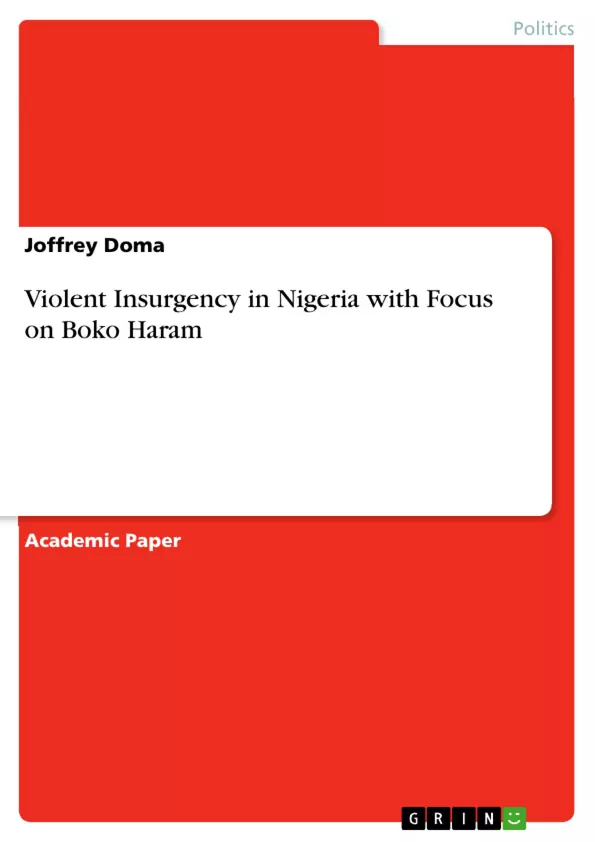In this paper, the author attempts to conduct an analysis of violent insurgency by focusing on Nigeria's Boko Haram as a case study.
While the first part of the paper has introduced the meaning of insurgency, the rest of the paper is structured as thus; the following section considers the origins of Boko Haram – their non-violent and violent days, and their general scope.
The next section then looks at some of Boko Haram's major attacks, and the general actions that the government and security agents have adopted to counter the violent insurgency. This part further looks at responses and reactions to the abduction of the Chibok schoolgirls as well as more recently, the Dapchi schoolgirls.
The subsequent section delves into the question of funding and sponsorship of Boko Haram, herein allegations of Boko Haram having internal as well as external sponsors is considered. The final part of the paper considers the future of insurgency in Nigeria, more specifically, the immediate future of terror.
Inhaltsverzeichnis (Table of Contents)
- Introduction
- Origins of Boko Haram
- Boko Haram's Major Attacks and Responses to the Insurgency
- Who Finances Violent Insurgency in Nigeria
- Closing Remarks: The Future of Violent Insurgency
Zielsetzung und Themenschwerpunkte (Objectives and Key Themes)
This paper aims to provide an in-depth analysis of violent insurgency in Nigeria using the Boko Haram group as a case study. It delves into the origins of Boko Haram, examining its evolution from a non-violent group to a violent force. The paper then explores major attacks carried out by Boko Haram, government responses, and the broader implications of the insurgency. Finally, it discusses the future of violent insurgency in Nigeria.
- The nature and evolution of insurgency, particularly focusing on the specific case of Boko Haram in Nigeria.
- The origins and development of Boko Haram, exploring its ideology and modus operandi.
- The major attacks and responses to the insurgency, including the government's countermeasures and the impact on the Nigerian population.
- The financial sources and sponsors of Boko Haram, considering both internal and external factors.
- The future trajectory of violent insurgency in Nigeria and the potential implications for the country's stability and development.
Zusammenfassung der Kapitel (Chapter Summaries)
The introduction provides a comprehensive definition of insurgency, drawing on historical context, international law, and modern interpretations. The paper explores the concept of insurgency within the framework of both traditional and contemporary definitions. It examines the evolving nature of insurgency, referencing various examples from across different historical periods.
The chapter focusing on the origins of Boko Haram traces the group's development, exploring its ideological foundations, and the factors that led to its transition from a non-violent group to a violent insurgency. It delves into the group's name, its roots in Islamic beliefs, and the impact of various internal and external influences on its evolution.
Schlüsselwörter (Keywords)
This paper focuses on the keywords of violent insurgency, Boko Haram, terrorism, Nigeria, socio-political change, guerilla tactics, Islamic ideology, government responses, and the future of insurgency in Nigeria. It examines the nature and impact of violent insurgency, specifically focusing on the case of Boko Haram as a manifestation of a complex socio-political landscape in Nigeria.
- Quote paper
- Joffrey Doma (Author), 2019, Violent Insurgency in Nigeria with Focus on Boko Haram, Munich, GRIN Verlag, https://www.grin.com/document/491389



